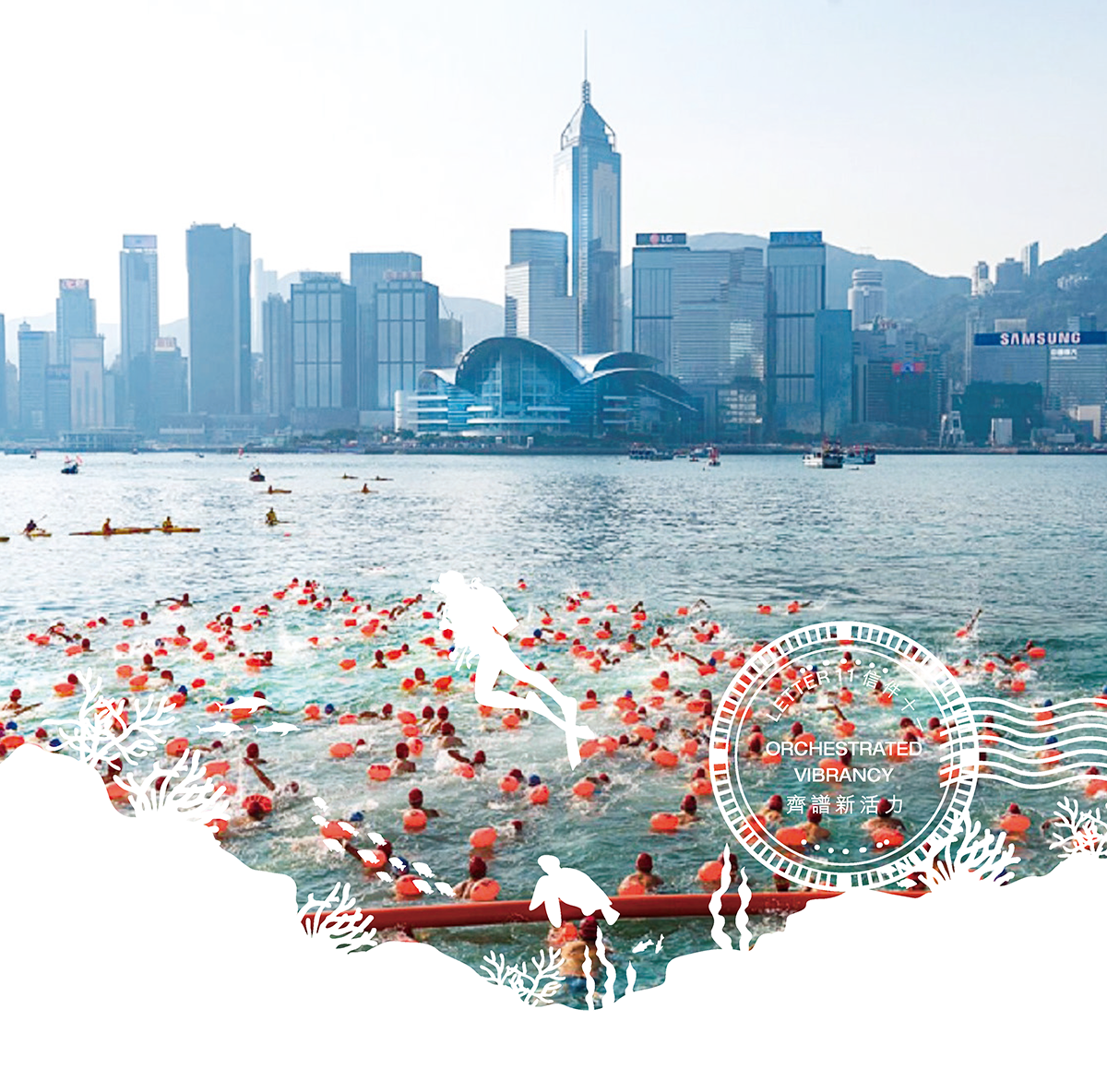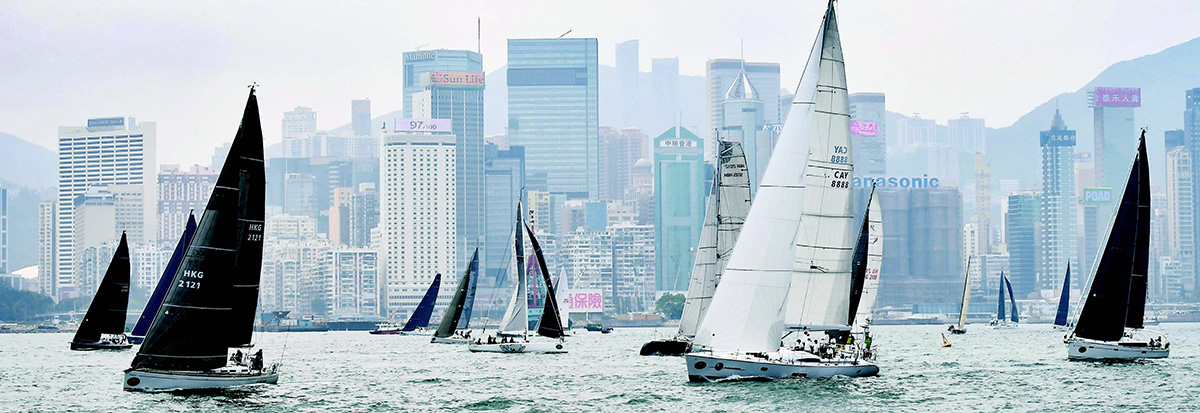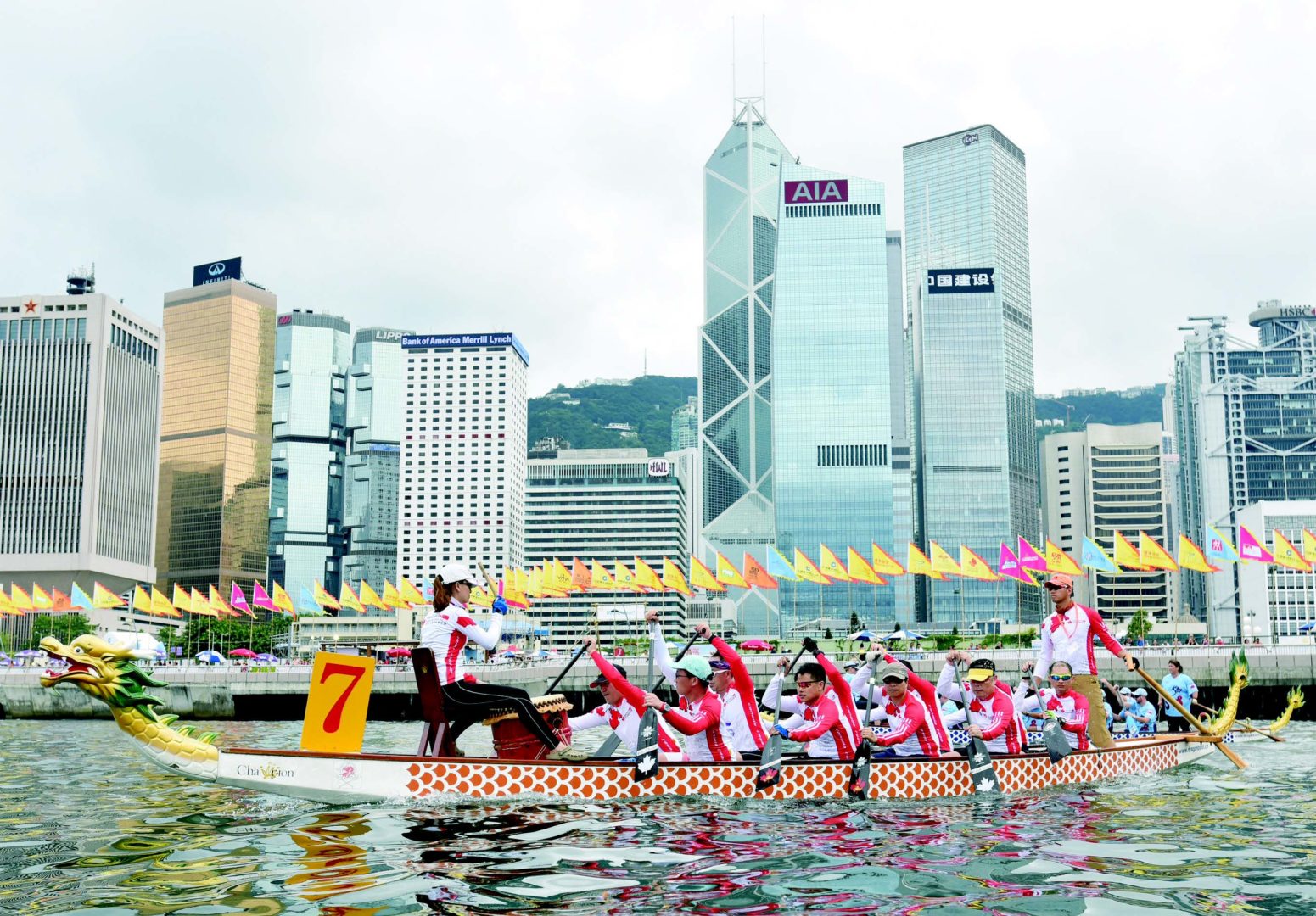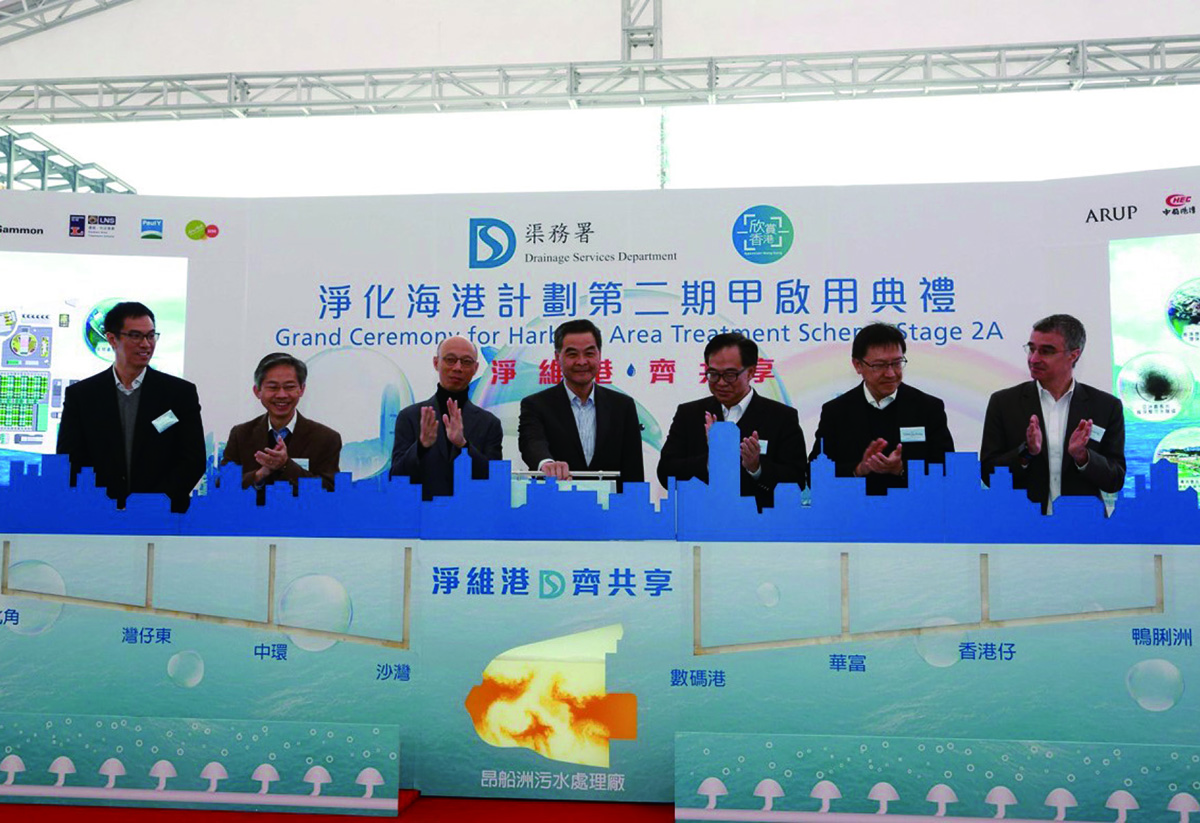

Dear Harbour,
This is the last in our series of letters to You, dear Victoria Harbour, on the Harbour Area Treatment Scheme or HATS. Even so, this is only the beginning of our long-term commitment to maintaining your water quality. We vow that Hong Kong will continue to enjoy a clean and fragrant harbour as it evolves as a smart city.
You have come a long way, our dear Harbour, from the 1980s when your water suffered from serious pollution which threatened marine life and our community wellbeing. The successful implementation of the HATS project, which spanned more than two decades from the early 1990s, has revived your vitality and enriched our city.
When HATS Stages 1 and 2A were fully commissioned in 2001 and 2015 respectively, your water quality saw immediate and dramatic improvement. Victoria Harbour is now clean and healthy again, with coral and other marine life thriving once more and closed beaches re-opened for all to enjoy. The city’s signature Cross Harbour Race, once suspended due to harbor pollution, resumed in the eastern part of the harbour in 2011, and moved back to its original route in the central part of the harbour in 2017.
Harbour Water Quality Improvement
Harbour water quality improvement is the most important benefit brought by HATS. By collecting sewage from both sides of Victoria Harbour and conveying it via a deep tunnel system to a centralised sewage treatment works on Stonecutters Island for chemically enhanced primary treatment before discharge into the western part of the harbour, HATS has dramatically improved harbour water quality. We have removed 70% of biochemical oxygen demand, 80% of suspended solids, and 99% of E. coli from sewage before discharge. We also observed that there has been about 13% increase in dissolved oxygen in our harbour water, a critical factor for marine life to flourish.
In fact, by 2016, just one year after the full commissioning of Stage 2A, the overall annual geometric mean E. coli level in the harbour was down to around 300 counts per 100 millilitres, a tenfold reduction from the late 1990s.
HATS now serves the sewage treatment needs of about 4.5 million people, with the capacity to serve up to 5.7 million in the future. As the gatekeeper of our harbour water quality, HATS will continue to maintain a healthy marine environment as our city grows.
The Seven Wonders of HATS
A world-class and award-winning environmental infrastructure project, HATS is a major engineering feat with many innovative achievements. HATS is also known internationally for its “Seven Wonders”.
- Hong Kong’s largest environmental infrastructure project — built over more than two decades with an investment of HK$25.8 billion
- The world’s deepest sewage tunnel — reaching 163 metres below sea level at its deepest point, equivalent to a commercial building at about 50 storeys, such as Jardine House in Central
- Asia’s longest very-deep tunnel — running a total length of 44.6 kilometres, the combined sewage tunnels are longer than a full marathon
- One of the world’s largest chemically enhanced primary treatment works — treating up to 900 million cubic metres of sewage per year, the Stonecutters Island Sewage Treatment Works (SCISTW) has a sewage capacity of 2.45 million cubic metres per day, equivalent to the volume of about 1,000 standard-size swimming pools
- The most efficient use of land for providing chemically enhanced primary treatment — occupying a site of about 10 hectares, SCISTW is only half the size of Victoria Park and yet serves up to 5.7 million people
- The world’s most powerful sewage pumping system in a chemically enhanced primary treatment works — with pumping capacity up to about 63.2 cubic metres per second, the sewage pumping system at SCISTW can pump the water out of a standard-size swimming pool in just 40 seconds
- The environmental infrastructure project spanning the greatest number of districts in Hong Kong — covering 10 districts on both sides of Victoria Harbour: Sai Kung, Kwun Tong, Kowloon City, Yau Tsim Mong, Sham Shui Po, Kwai Tsing, Wan Chai, Eastern, Central and Western, and Southern Districts
These “wonders” explain why HATS has become such a popular destination for visitors and delegations of engineers, technical experts and municipal government officials from all over the world. Visitors are particularly impressed with the compact design of SCISTW, which gives it the capacity to serve the sewage treatment needs of up to 5.7 million people while making highly efficient use of our precious land resources.
Innovation
In our earlier letters to You, our dear Harbour, we explained the numerous engineering challenges encountered during HATS Stages 1 and 2A works, in particular the difficulties in site investigation for deep tunnels, tunnelling works, and underground water ingress control. With great patience and perseverance, the project team overcame every challenge. In the process, it also introduced many innovative technologies and methods to Hong Kong, making a positive and lasting impact on the local engineering and construction sectors.
For example, HATS was the first project in Hong Kong to use brine as a coolant in Artificial Ground Freezing to control groundwater inflow for the construction of an interconnection tunnel. Horizontal Directional Coring and Horizontal Directional Drilling, both state-of-the-art technologies at the time, were adopted for tunnel site investigation and drilling small-diameter tunnels respectively. These are just a few examples of the innovative solutions we tailored to overcome the numerous engineering challenges of this ambitious project.
Sustainability
HATS is not only an engineering feat, but also a sustainability success story. As the largest-ever environmental infrastructure project in Hong Kong, HATS strives to save energy and contribute to sustainable development in every aspect of its design and operation.
Examples of sustainability in action at HATS include adopting the “inverted siphon” principle in designing the deep tunnel system to save pumping energy, deploying numerous eco-friendly and greening features at SCISTW and various Preliminary Treatment Works, and building two ocean-going vessels for the daily transportation of sludge cakes to T · PARK for incineration to generate electricity and thus complete the waste-to-energy sustainability cycle. These and other measures make HATS a template for future sewage collection, treatment and disposal infrastructure development in Hong Kong.
Economically, the ongoing operation and maintenance cost of HATS is offset by a statutory sewage charge and trade effluent surcharge based on the “polluter pays” principle. Indeed, HATS was the project that introduced the “polluter pays” principle to Hong Kong in the 1990s, a concept that has served the city well ever since.
So, our dear Harbour, we have come to the end of these letters. Your beauty and vibrancy, now fully restored, will continue to charm and nourish the people of our beloved city for decades and centuries to come. We at DSD shall continue to protect and enhance your water quality, and where necessary further advance the HATS project in future to make You, Victoria Harbour, ever more pristine and fragrant.
With love,
Drainage Services Department

Yachts of the China Sea Race 2018 set off from Victoria Harbour on 28 March 2018

Hong Kong Dragon Boat Carnival from 10 to 12 June 2016

The 2018 Asian Rowing Coastal Championships held on 24 and 25 November at Victoria Harbour

Harbour Area Treatment Scheme Stage 2A grand ceremony on 19 December 2015
